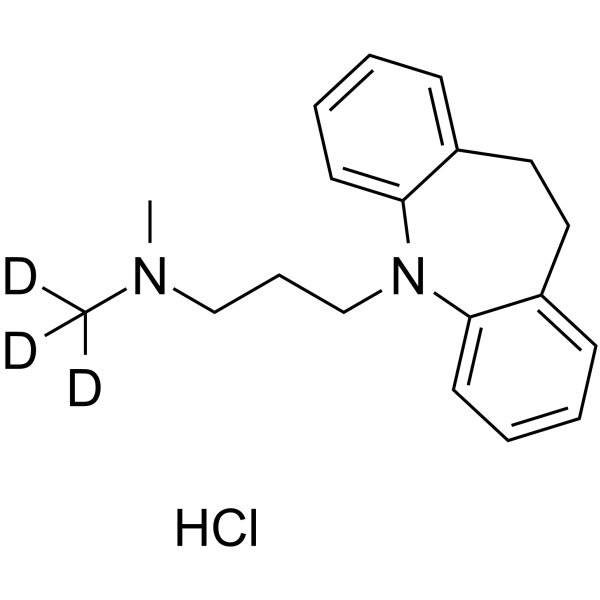Imipramine-d3 hydrochloride
Modify Date: 2024-01-12 21:31:28

Imipramine-d3 hydrochloride structure
|
Common Name | Imipramine-d3 hydrochloride | ||
|---|---|---|---|---|
| CAS Number | 112898-42-7 | Molecular Weight | 319.89 | |
| Density | N/A | Boiling Point | N/A | |
| Molecular Formula | C19H22D3ClN2 | Melting Point | N/A | |
| MSDS | N/A | Flash Point | N/A | |
Use of Imipramine-d3 hydrochlorideImipramine-d3 (hydrochloride) is deuterium labeled Imipramine (hydrochloride). Imipramine hydrochloride inhibits serotonin transporter with an IC50 value of 32 nM. Imipramine hydrochloride is reported to prevent the translocation of aSMase, inhibiting MV and exosomes secretion[1][2][3][4][5]. |
| Name | Imipramine-d3 hydrochloride |
|---|
| Description | Imipramine-d3 (hydrochloride) is deuterium labeled Imipramine (hydrochloride). Imipramine hydrochloride inhibits serotonin transporter with an IC50 value of 32 nM. Imipramine hydrochloride is reported to prevent the translocation of aSMase, inhibiting MV and exosomes secretion[1][2][3][4][5]. |
|---|---|
| Related Catalog | |
| In Vitro | Stable heavy isotopes of hydrogen, carbon, and other elements have been incorporated into drug molecules, largely as tracers for quantitation during the drug development process. Deuteration has gained attention because of its potential to affect the pharmacokinetic and metabolic profiles of drugs[1]. |
| References |
| Molecular Formula | C19H22D3ClN2 |
|---|---|
| Molecular Weight | 319.89 |